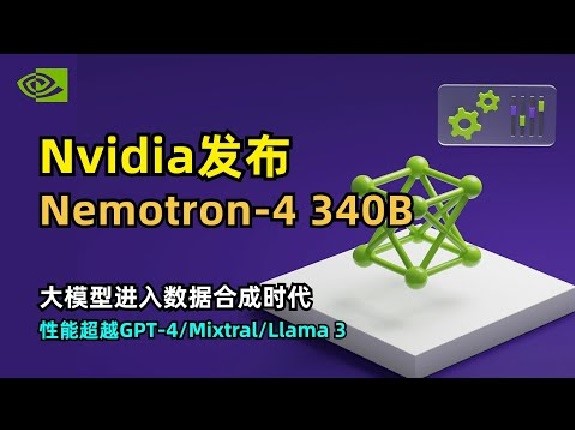In the development process of artificial intelligence, data and computing power have always been the two-wheel driving force to promote technological innovation. NVIDIA's latest masterpiece, the Nemotron-4 340B model, heralds a new round of growth in the optical module market with its open-source attitude and powerful synthetic data generation capabilities. This article delves into the technical details, market dynamics, and industry implications behind this change.
Technological breakthrough: open source and innovation of the Nemotron-4 340B model
NVIDIA's Nemotron-4 340B model, an open-source AI model with 34 billion parameters, represents a major leap forward in AI technology. The model not only surpasses existing large language models in scale, but also makes breakthroughs in synthetic data generation. According to Nvidia's official statement, the training data of Nemotron-4 340B covers up to 9 trillion tokens, of which 98% of the instruction model training is completed on synthetic data.

Pictured: NVIDIA unveils the Nemotron-4 340B model
The Rise of Synthetic Data and Market Implications
The introduction of synthetic data provides a more cost-effective solution for AI model training. According to the analysis of Northeast Securities, with the increase in the demand for computing power for large AI models, the demand for high-performance switches and optical modules will continue to grow. This trend not only reduces the reliance on expensive real-world datasets, but also creates new market opportunities for transceiver manufacturers.
Empirical analysis of the requirements for optical modules
According to the Financial Associated Press, relevant listed companies such as Kechuan Technology and Robotec have begun to lay out their own production capacity for higher-rate optical module products, and have carried out in-depth cooperation with technology giants such as Nvidia. These developments indicate that the demand for optical modules is growing rapidly and is expected to continue to grow strongly in the coming years.
Industry applications and prospects
The open source of the Nemotron-4 340B model brings new opportunities to multiple industries such as healthcare, finance, manufacturing, and retail. In the medical field, the application of synthetic data can accelerate the development of drug discovery and personalized medicine; In the financial sector, the accuracy of fraud detection and risk assessment can be improved. These use cases further confirm the potential of the Nemotron-4 340B model to advance the industry.
Challenges and ethical considerations
While the open-sourcing of the Nemotron-4 340B model has brought many positive impacts, there are also some potential challenges. The quality and accuracy of synthetic data needs to be tightly controlled to avoid introducing bias into AI decision-making. In addition, data privacy and security are also issues that cannot be ignored. With the proliferation of synthetic data, businesses need to take effective protective measures to protect sensitive information and prevent data misuse.
Conclusion
NVIDIA's open-source Nemotron-4 340B model is not only an important milestone in the development of AI technology, but also a key factor driving the demand for optical modules. With the continuous advancement of AI technology and the continuous expansion of applications, we have reason to believe that this open-source model will have a profound impact on all walks of life. At the same time, we should also pay attention to the challenges that may arise in the process of technological development and seek solutions within ethical and legal frameworks.






